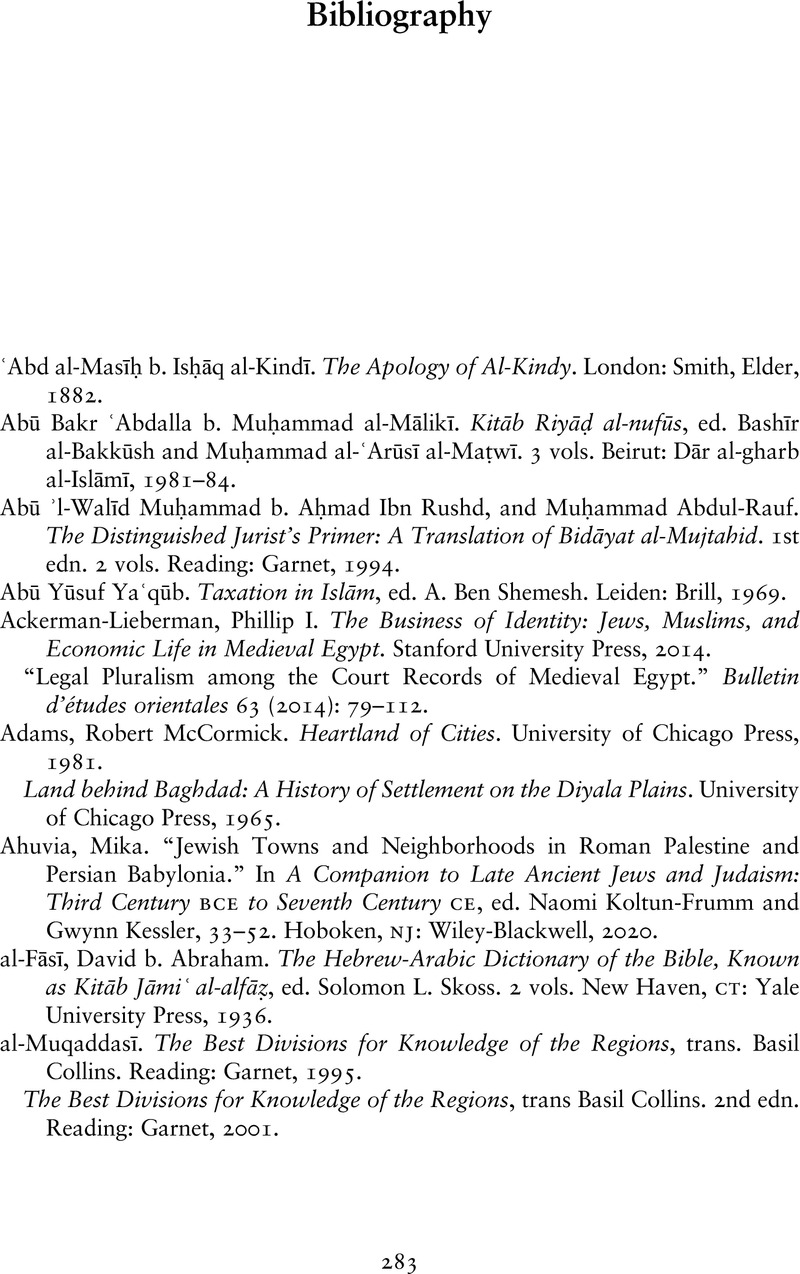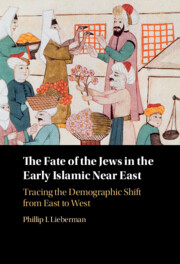Book contents
- The Fate of the Jews in the Early Islamic Near East
- The Fate of the Jews in the Early Islamic Near East
- Copyright page
- Contents
- Figures
- Tables
- Acknowledgements
- Preface
- Abbreviations
- 1 The Field of History and the Fields of Iraq
- 2 Jewish Occupational Choice and Urbanization in Iraq
- 3 Conversion to Islam among the Jews of Early ʿAbbāsid Iraq
- 4 Onomastics, the Cairo Geniza, and Jewish Exceptionalism
- 5 The Early Vulgar Judeo-Arabic Spelling (EPJAS) and Westward Movement
- 6 The Development of Jewish and Islamic Commercial Law in the Early Islamic Centuries
- 7 Migratory Movements throughout the Islamic Mediterranean in the Early Islamic Centuries
- Conclusions
- Bibliography
- Index
- References
Bibliography
Published online by Cambridge University Press: 09 June 2022
- The Fate of the Jews in the Early Islamic Near East
- The Fate of the Jews in the Early Islamic Near East
- Copyright page
- Contents
- Figures
- Tables
- Acknowledgements
- Preface
- Abbreviations
- 1 The Field of History and the Fields of Iraq
- 2 Jewish Occupational Choice and Urbanization in Iraq
- 3 Conversion to Islam among the Jews of Early ʿAbbāsid Iraq
- 4 Onomastics, the Cairo Geniza, and Jewish Exceptionalism
- 5 The Early Vulgar Judeo-Arabic Spelling (EPJAS) and Westward Movement
- 6 The Development of Jewish and Islamic Commercial Law in the Early Islamic Centuries
- 7 Migratory Movements throughout the Islamic Mediterranean in the Early Islamic Centuries
- Conclusions
- Bibliography
- Index
- References
Summary

- Type
- Chapter
- Information
- The Fate of the Jews in the Early Islamic Near EastTracing the Demographic Shift from East to West, pp. 283 - 300Publisher: Cambridge University PressPrint publication year: 2022



